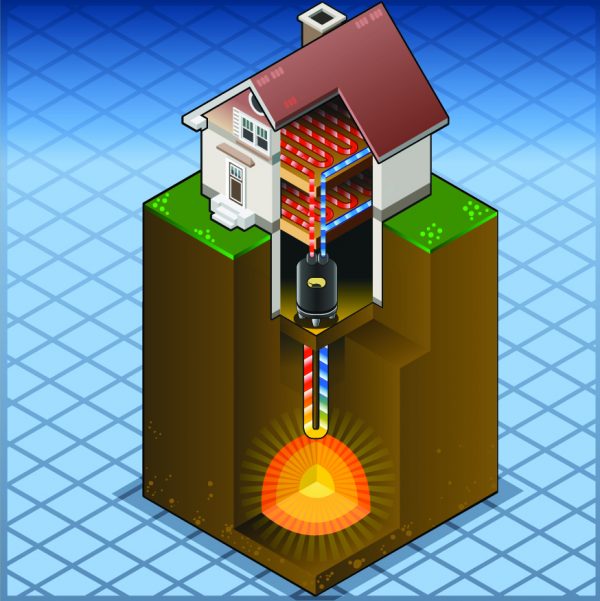Geothermal Heating & Cooling Systems
Have You Heard About the Most Efficient and Long Lasting Heating and Cooling Solution on the Market?
Geothermal heating and cooling systems use the heat stored underground to warm and cool your home. That’s right; you can heat and cool your entire home without fossil fuel, while also lowering your energy consumption. Did we mention that this system cools your home as well? We’re able to use a geothermal system in your home for both heating and cooling. With geothermal, you get one single system, no fossil fuels, and almost no maintenance. What are you waiting for?
How Does Geothermal Heating and Cooling Work?
Unlike other types of heating and cooling systems, geothermal units do not burn fossil fuels to generate heat. A geothermal unit pulls heat from the ground, where the temperature stays relatively the same all year long. Low-maintenance and efficient, these systems can last for generations. There are three main components in a geothermal system: the heat-pump unit, the liquid heat-exchange medium, and the air delivery system (your ducts). Pipes can be buried under the ground both vertically and horizontally, depending on your property.

What Makes Geothermal Units So Energy-Efficient?
Because your geothermal system is working with nature, not against it, it can produce the same effects of a traditional furnace, but with less energy consumption. Your geothermal system will transfer heat to and from the earth and emit no greenhouse gasses. Heating and cooling systems using geothermal energy have been used in the U.S. for more than 60 years and its predecessors were even used in ancient Pompeii!
Because there is no outdoor equipment involved with a geothermal system, it runs more efficiently and is resistant to common problems that frequently impact air conditioners. Geothermal systems do not consume any water, they are nearly soundless, and they do not require much space to install. If you’re interested in learning more about a geothermal heating and cooling system, give B & T Heating, Ventilation, and Air Conditioning a call today.
What is the Difference Between a Geothermal System and a Regular Heat Pump?
A traditional heat pump or an air-source heat pump use an outdoor coil and an indoor coil to pull the heat out of the air and move it inside. In the summer, a heat pump reverses the process, literally pulling the heat out of your indoor air. A geothermal heating and cooling system includes a heat pump, but instead of pulling the air from outside it draws air from underground. The geothermal system does not have to expend as much energy to make your home feel comfortable. However, an air-source heat pump requires no digging and can be cheaper to install. Both are energy-efficient heating and cooling options that have been recommended by the U.S. Department of Energy and often have tax credits available.
Benefits of a Geothermal System:
-
Interior Components Last Roughly 25 Years
-
Underground Components Last 50+ Years
-
No Fossil Fuels Used
-
Highly Energy-Efficient







